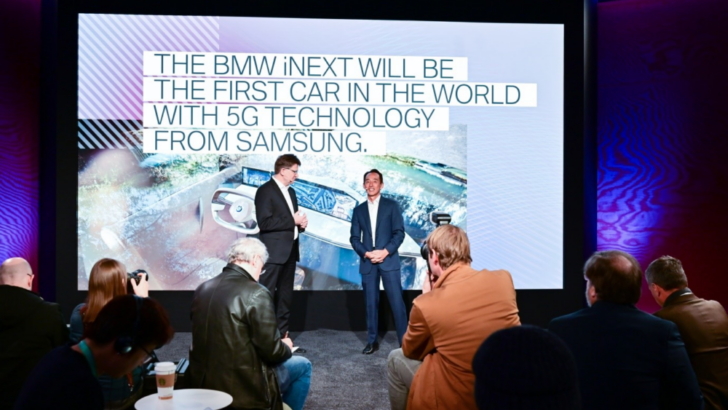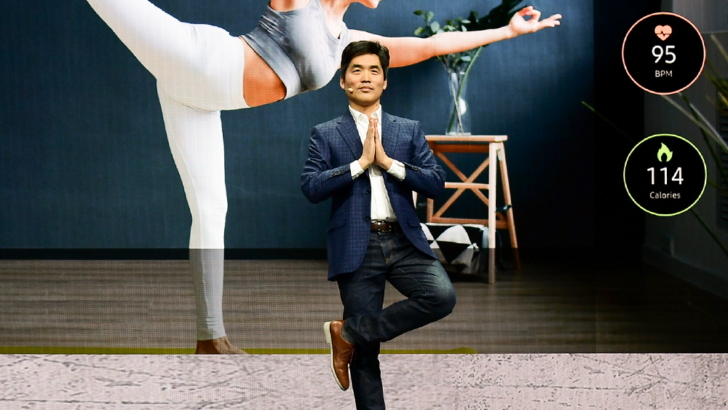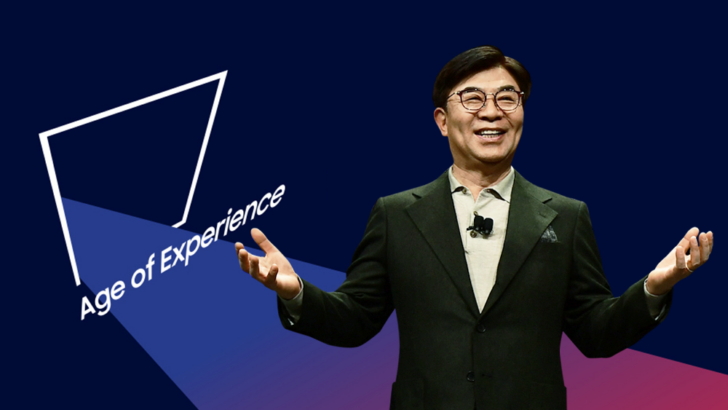Samsung Pioneers 5G-Based Mobility with Launch of Digital Cockpit 2020
on January 8, 2020

At CES 2020, Samsung Electronics unveiled Digital Cockpit 2020, which utilizes 5G to link features inside and outside the vehicle and provide connected experiences for drivers and passengers alike.
Digital Cockpit 2020 is the third co-development between Samsung Electronics and HARMAN International, and combines Samsung’s telecommunications technologies, semiconductors and displays with HARMAN’s automotive expertise. The solution enables seamless two-way connections between the home, the office and all the other spaces that users may visit while providing personalized experiences and in-car infotainment. What’s more, smart features enabled through Bixby actively support the driver, further reinforcing safe driving.
Digital Cockpit 2020 incorporates eight displays inside the vehicle, as well as eight cameras. The solution utilizes Samsung Exynos Auto V9 SoC (System on Chip), a semiconductor for vehicle electronics, and Android 10, which allow for several features to be run at the same time.
Tailored Infotainment Delivery
Once the driver logs in using either facial recognition or a smartphone fingerprint reader, the Center Information Display can be used to show the driver’s schedule and a range of other information.


The Digital Cockpit’s Front Display provides visual navigation information and is positioned to ensure that the driver keeps their eyes on the road. It is equipped with QLED Local Dimming1 technology and split-screen mode to allow passengers to make use of the display without distracting the driver.

The Dashboard Display, which is seamlessly incorporated into the vehicle’s interior design, is positioned under the Front Display and delivers visual notices and alerts.


When the driver activates Samsung’s Bixby voice recognition service, this display shows a Bixby animation that listens to the driver’s commands.

The Console Display is located under the Center Information Display. It can be set up to control various features and the functions of other displays, as well as the vehicle itself.

Passengers sitting in the back seats can connect their personal tablets to the Digital Cockpit and use them to control things like air conditioning, ambient lighting and vehicle speakers. They will also be able to enjoy multimedia content and other services provided by the system on their devices once they are connected.

When the driver or passengers connect their mobile devices to Samsung DeX2 for vehicles, they will be able to read and work on documents from their PCs on the car’s Center Information Display. The display also has a feature that allows users to connect multiple mobile devices at the same time. Unlike the 2019 Digital Cockpit, the 2020 solution allows for these connections to be made wirelessly.

The Digital Cockpit 2020 also features multi-zone audio, which allows each passenger to listen to their own music via speakers embedded in the headrests of their seats.

Enhancing Safety According to Individual Needs
On the back of the vehicle, micro LEDs on the external tail lamps are used to form the 53.7-inch Tail Display. With V2X (Vehicle to Everything) communication technology and the Tail Display, the vehicle can share messages and communicate the driver’s status to parties outside the vehicle when required. For example, the display might show messages such as “roadworks ahead” and “pedestrians approaching”, among others.

Inside the vehicle, two 7-inch displays – one on the left and one on the right – serve as displays for the Camera Monitoring System, which replace the conventional side mirrors in the Digital Cockpit 2020. The system monitors possible risks on the rear lateral sides of the vehicle while the user is driving or parking. In addition, the driver can adjust the areas that the cameras monitor according to their preferences.

Meanwhile, the Cabin Talk feature allows the driver to conveniently talk to the passengers in the back seats without needing to turn their head.
Smarter “Bixby in the car” Actively Communicates with Drivers

Digital Cockpit 2020 operates based on the Android platform for cars. This allows Samsung’s integrated IoT platform SmartThings to work in tandem with the revamped “Bixby in the car” to enhance connectivity by allowing the vehicle to actively communicate with the driver. For example, when someone visits your house, Bixby in the car detects the visitor via SmartThings and notifies you of the visit. Not only that, but Bixby can also make suggestions regarding turning lights and home appliances on at your house while you’re on the way home.
What’s more, Bixby in the car also monitors the driver’s status via the Driver Monitoring System, and tailors its suggestions to the driver’s perceived needs. For example, when you are growing drowsy during a long-distance drive, the system may suggest turning on some music, or taking other precautions to combat drowsiness.
Smarter Bixby in the car establishes an environment that is carefully tailored to suit the driver’s needs and circumstances. What’s more, the system actively monitors the status of the vehicle (things such as engine oil levels), and Bixby alerts the driver when a visit to a maintenance shop is needed.
1 Samsung’s QLED Local Dimming technology allows for the brightness in the screen to be selectively adjusted according to what is being displayed at the time
2 Samsung DeX is a service that allows mobile devices to connect to and realize an environment similar to a PC anywhere, anytime



